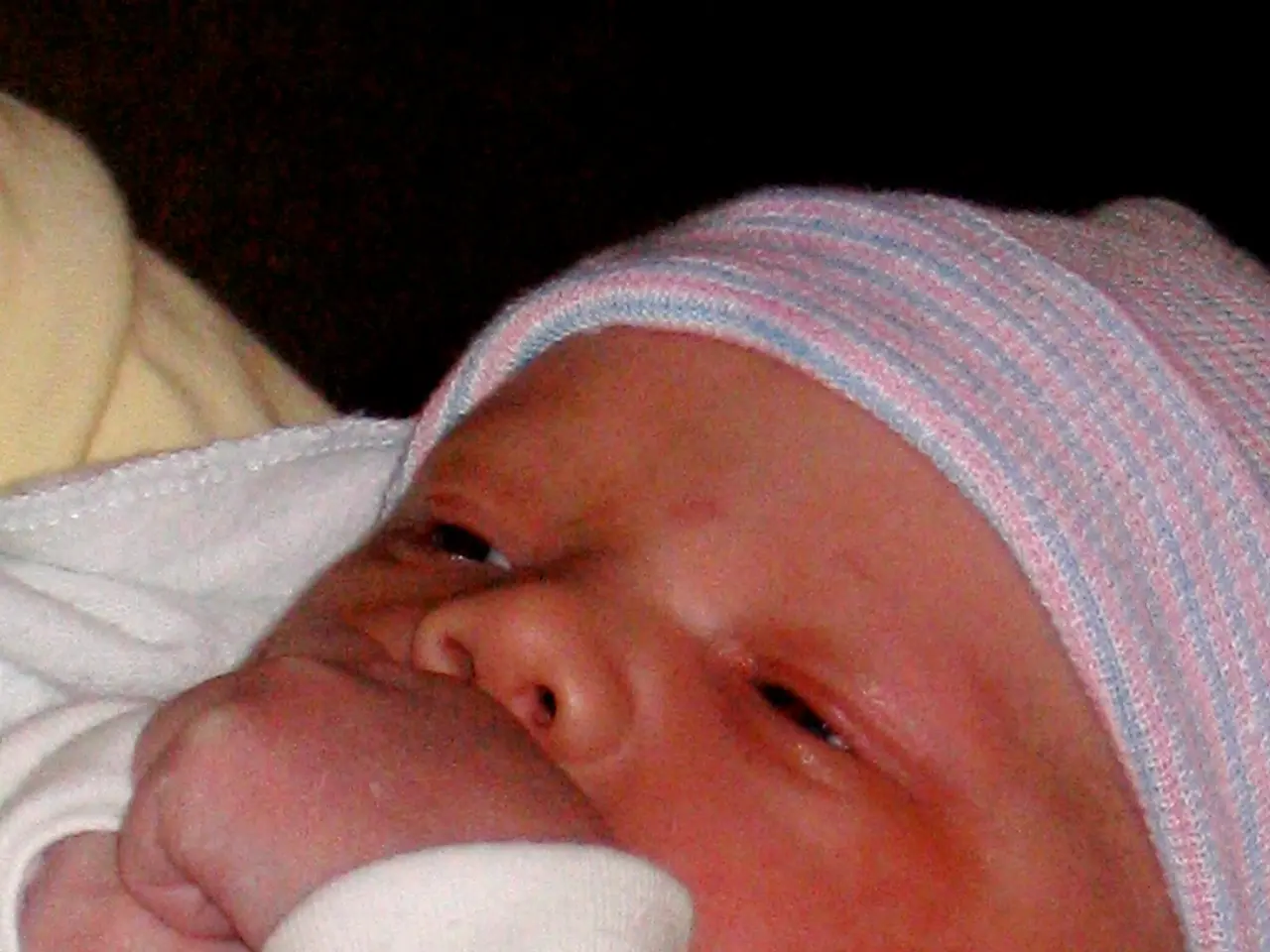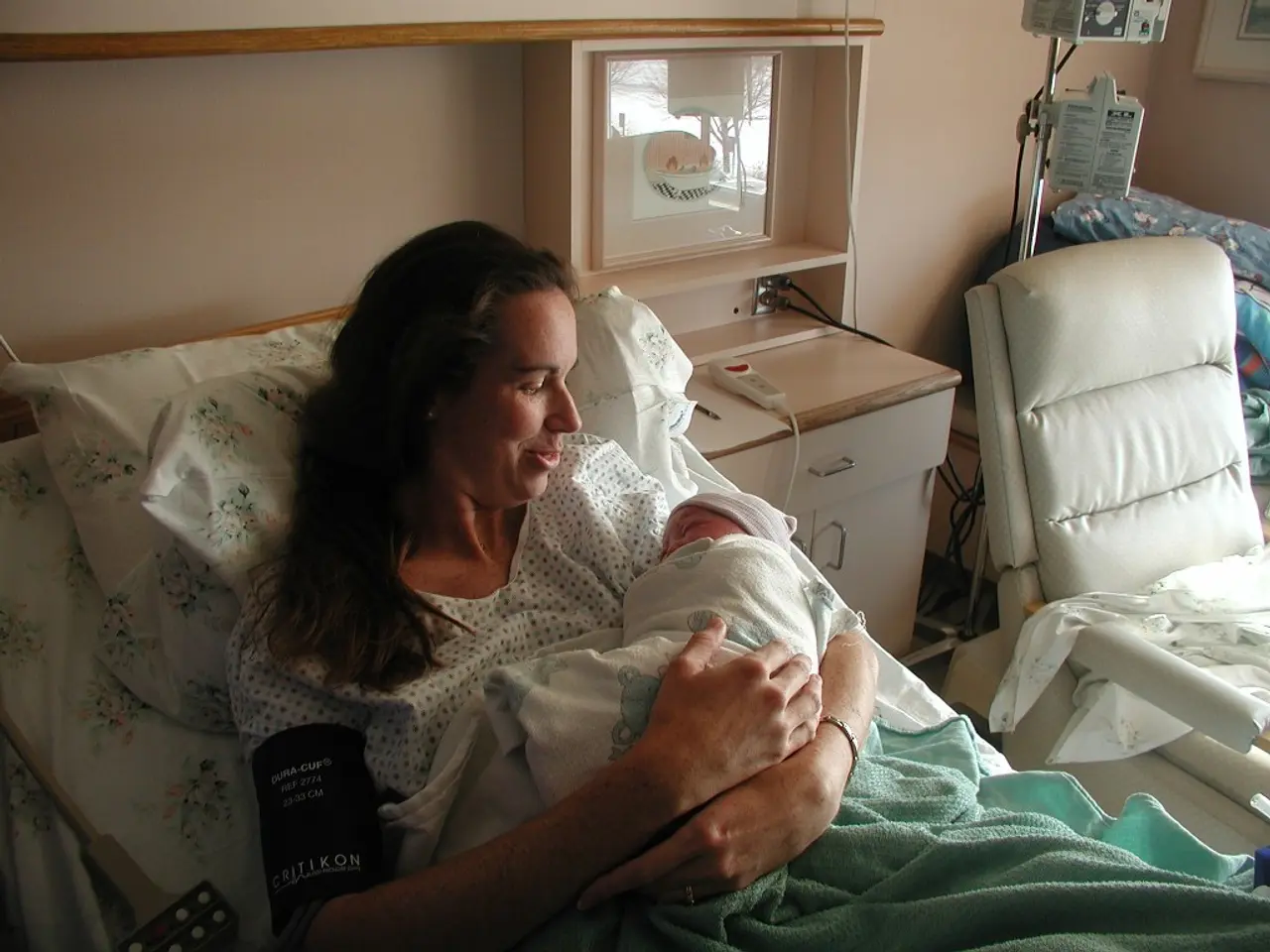Swift Strategies for Parents Dealing with Diaper Accidents
In the world of parenting, one challenge that many new parents face is dealing with diaper leaks. To help you navigate this issue, we've gathered some effective strategies for managing and preventing diaper leaks in babies.
First and foremost, ensuring the right diaper size and fit is crucial. Diapers that are too tight, too small, or poorly adjusted around the thighs, waist, and groin are more prone to leaks. Always size up if leaks occur regularly and adjust the snaps or elastic bands for a snug but comfortable fit.
Choosing absorbent diapers with leak guard features is another key strategy. Disposable diapers often have multi-layer designs with absorbent cores made of fluff pulp and superabsorbent polymers that lock in moisture and turn it into gel, reducing leaks. Features like elastic waistbands, leg cuffs, and breathable outer layers help keep babies dry while allowing movement without leaks.
Frequent diaper changes are also essential. Changing diapers every 2 to 3 hours, especially for newborns, reduces the chance of over-saturation and leaks, while also preventing diaper rash and maintaining comfort.
For cloth diaper users, carefully checking the fit around thighs and waist, adjusting rise snaps and leg openings, and ensuring no gaps can greatly reduce leaks.
If your baby is a boy, consider using a different style of diaper that offers extra absorbency in the front area. Some diaper brands market leak-proof designs tailored for active babies and heavy wetters to improve comfort and prevent blowouts.
In some cases, low-quality diapers may have inferior absorbency, leading to leaks. Invest in diapers that are known for their absorbency and leak prevention capabilities.
Side leaks can occur when the diaper is not fitted properly around the baby's legs. To prevent side leaks, make sure the leg cuffs are snug but not too tight. If side leaks persist, consider trying a different brand or style of diaper.
If your baby is starting to become more active, consider using diapers designed specifically for active babies. Back leaks happen when urine escapes from the back of the diaper, commonly during bowel movements. To prevent back leaks, ensure the back of the diaper aligns with your baby's spine for maximum coverage.
If persistent diaper leaks are a concern, it's crucial to evaluate possible underlying health issues. Consulting pediatricians or healthcare providers can help identify the root cause of persistent diaper leaks.
Using diaper liners can act as a barrier between the baby's skin and the diaper, preventing leaks and reducing irritation. Diaper boosters or doublers can be used to add an extra layer of protection against leaks.
For nighttime leaks, consider using a nighttime diaper with extra absorbency. Be mindful of the diaper's capacity and avoid waiting too long to change it when it becomes full.
Regularly check the diaper for wetness and change it promptly to prevent leaks. A strong smell coming from the diaper area might be a sign of leaks. Change the diaper every 2 to 3 hours, or more frequently if needed.
Lastly, using diaper inserts or boosters to enhance absorbency and prevent leaks, and diaper creams or ointments can serve as a protective layer on the baby's skin, preventing leaks caused by diaper rash.
By following these strategies, you can significantly reduce the occurrence of diaper leaks and ensure a more comfortable and stress-free diaper-changing experience for both you and your baby.
Parenting a baby often involves dealing with diaper leaks, and finding effective strategies to manage and prevent them is essential. A proper diaper fit is crucial; diapers that are too tight, small, or improperly adjusted can be more prone to leaks. Investing in absorbent diapers with leak guard features can also help, as they lock in moisture and convert it into gel. Cloth diaper users should pay attention to the fit around the thighs and waist. Boys might benefit from diapers with extra absorbency in the front. Persistent leaks could indicate underlying health issues, so consulting pediatricians or healthcare providers is important. Diaper liners, boosters, and nighttime diapers with extra absorbency can act as additional lines of defense against leaks. Regularly checking the diaper for signs of wetness and changing it promptly can prevent leaks, while using diaper creams or ointments can protect the baby's skin from leaks caused by diaper rash. Adhering to these tips can lead to a more comfortable and stress-free diaper-changing experience for the family.




